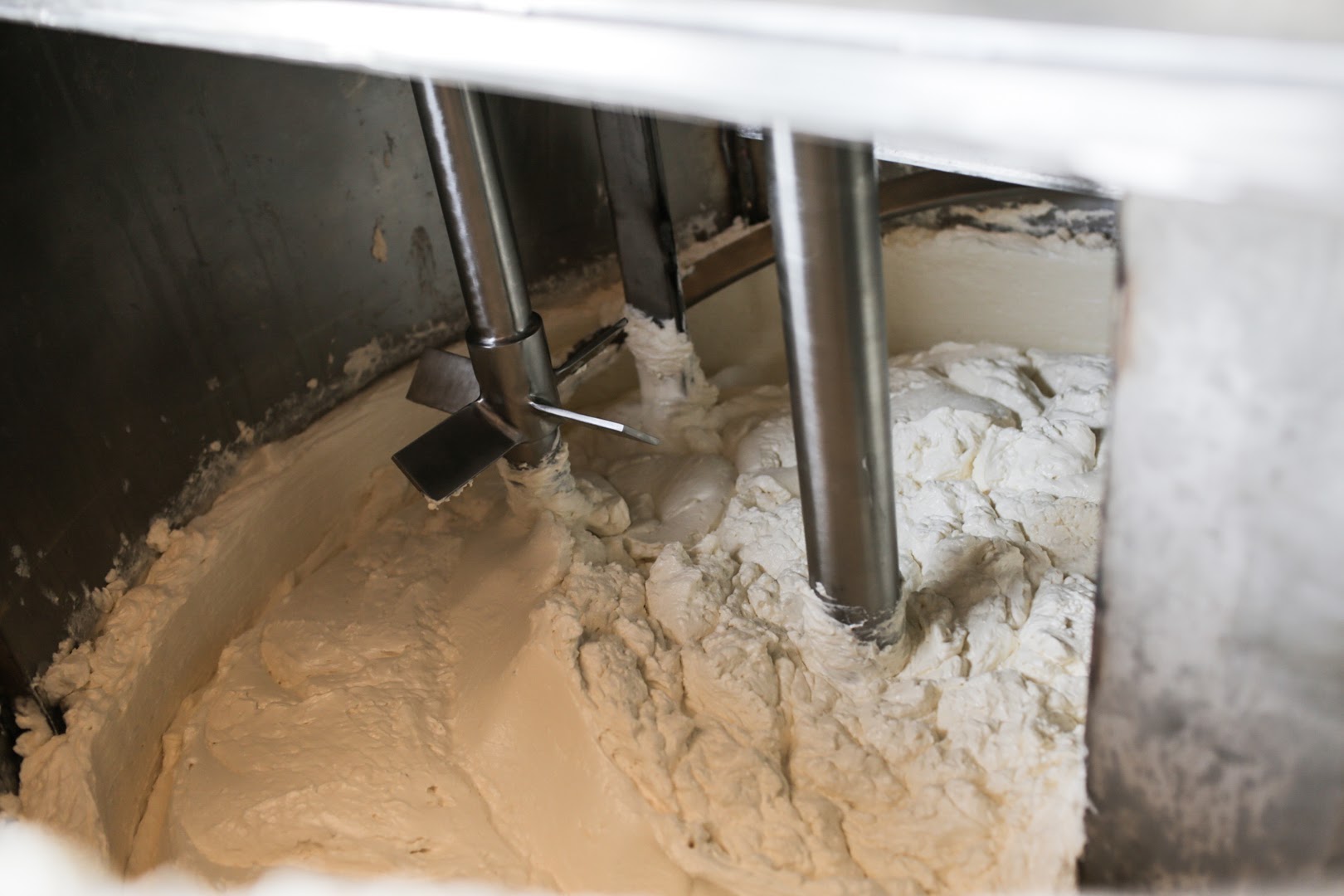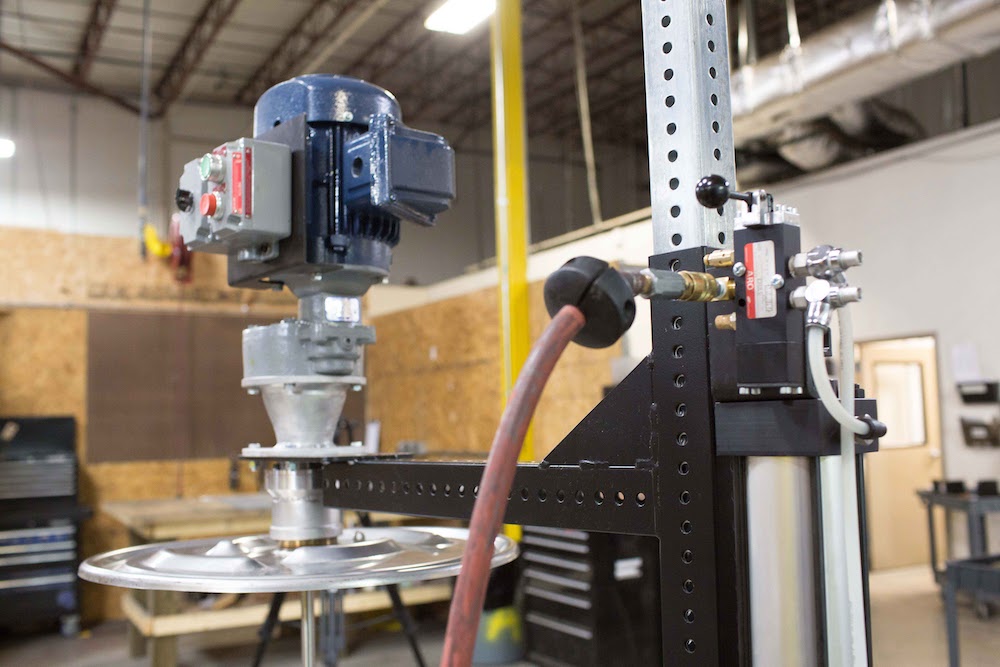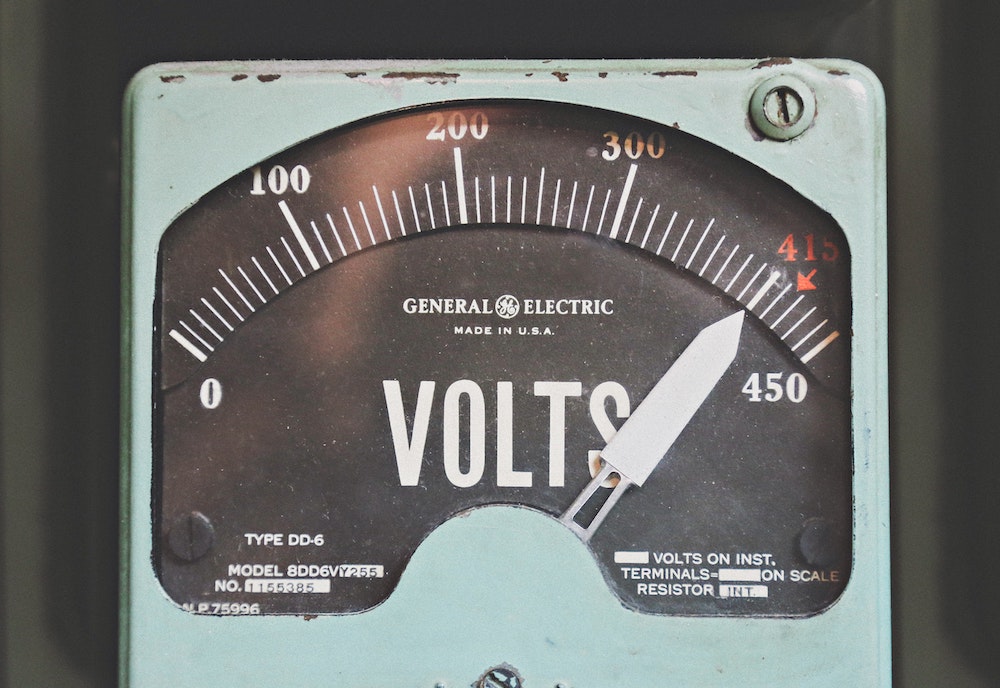Back to the Basics of Mixers: Flow & Shear
You’ve decided you need to upgrade to an industrial mixer. That's great, but where to start? You have impellers, shafts, motors, and mounts to...

When thinking about what kind of motor you need, you need to consider your shear and flow needs. ("shear" meaning breaking down the chemicals in your mixture and "flow" meaning the rate at which the mixture moves about the container). Shear and flow are inversely related, so if you decrease your shear, you will increase your flow.
If you want shearing in your process, you will also need speed. As the impeller spins quickly, the energy from the impeller is transferred into the mixture and breaks down the chemical bonds of the elements in the mixture. At the same time you need to be considering of the size of your mixing impeller. To get a large impeller to spin at the same speed as a small impeller, you'll need a lot more power. For example, to turn a 5 inch impeller in water at 1750 RPMs, you'd need a 0.5 HP motor. To turn a 10 inch impeller at the same speed would require a 13 HP motor. That's an increase of 2600%.
Increasing flow requires less horsepower than generating shear. Flow increases exponentially with impeller size. For example if you have a 5HP motor turning a 5 inch impeller at 1000 RPMs, you would get a bulk fluid velocity of 6.7 feet per minute. If you keep the other variables the same and increase the impeller size to 10 inches, you would get a bulk fluid velocity of 38 feet per minute. If you increase the impeller size to fifteen inches you would get a bulk fluid velocity of 104.9 feet per minute.
You also need to consider the mechanics of the motor. We sell direct drive motors and geared motors. A direct drive motor has no gears and directly grips the shaft going down into your mixture. All the power of the motor is then transferred as directly as possible into the mixture which is better for speed and shear. A geared motor has a gearbox that creates higher torque for turning a large blade to achieve a high flow.
Once you have decided what kind of horsepower you are going to need from your motor, you can start looking at what kind of power supply you'll want to use to run your mixer.

You’ve decided you need to upgrade to an industrial mixer. That's great, but where to start? You have impellers, shafts, motors, and mounts to...

Once you have your impeller, motor, and shaft you’ll need to mount the mixer to the container or set up a stand where you can lower the mixer in and...

At Mixer Direct, we sell two basic kinds of motors. The first motor is powered by alternating current electricity. The second kind is powered by...